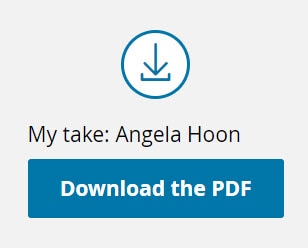My takes from leading CROs has been saved

Perspectives
My takes from leading CROs
Excerpts from Deloitte's 2019 survey of risk management
The majority of executives now acknowledge risk management’s strategic importance. The task now before risk management functions—and chief risk officers—is to rise to the challenge by equipping themselves to provide business-focused insight. Read how CROs from Becton Dickinson, Exelon, and General Motors are tackling today’s risk management challenges.
Explore Content
Featured my take: Angela Hoon
Executive director, Strategic Risk Management, General Motors (GM)
My take: Paymon Aliabadi
Chief risk officer, Exelon
How is risk management organized at Exelon?
I report directly to the CEO. Five years ago, we had a risk management organization and program dedicated to supporting our trading business, focused primarily on financial risks market and credit. During the last five years, we have established a broader enterprise risk management ERM program to supplement our best-in-class commercial risk.
The ERM program is composed of two elements. We have an ERM Operations group—senior risk professionals embedded in our operating companies including generation and utilities—which had not been a focus. In addition, we have established the ERM Analytics team to address strategic risk management. ERM Analytics is responsible for a broader review of our business risks, strategic risks, emerging risks, and disruptive trends. They look at the whole portfolio and develop the CRO report for the board at every meeting. ERM also provides risk management support in our business services group, which houses finance, HR, supply, IT, and strategy.
Five years ago, I could only give you our exposure in our trading business, but not across our enterprise. We now have an expanded scope and we evaluate and aggregate risks across the broader enterprise in one snapshot. This is also a much leaner team, yet with an enterprise perspective.
As CRO, what is your view of reporting directly to the CEO?
I believe, it is critical. If I wasn’t a direct report to the CEO, I would lack visibility to my colleagues managing various parts of the business. I have a seat at the table as a peer and can participate in decision making as a full team member. This reporting structure elevates the standing of risk across the organization in terms of how you influence and drive priorities or initiatives.
Any other benefits of being a direct report to the CEO?
Well, without that there’s the potential of limiting the potential impact of risk management to a narrower role. There is another key factor: We have board members with deep banking and private equity backgrounds and they “get” risk management. They insisted on a standing risk committee of the board, with active participation across the board. It is where transactions come up for review and approval and risk topics are discussed. As part of that, I am expected to participate, present, and help manage the board agenda with respect to risk priorities. It’s just a different dynamic when reporting to the CEO.
My take: Steve Richard
Chief audit executive, senior vice president, Internal Audit and Enterprise Risk Management, Becton Dickinson
How is risk expected to deliver value in your organization?
For us, risk management isn’t this separate activity, but rather an integral part of the business. I have a relatively small ERM team that works very closely with leaders across the business, who need support to achieve their objectives. We focus on avoiding bad things, but also on enabling the businesses to operate without disruption. We partner with our executives to make sure what we ask of them is less intrusive and as efficient as possible. We want the benefits of a sound ERM program with as little burden as possible.
Are there examples you could share on how you create that environment?
Some things are macro risks and affect everyone. Cyber is one of those, and the businesses assume we have that covered. Since we are a manufacturer, we address supplier disruption and think strategically about single-source suppliers and how they can impact our strategy. People in the business do this as part of their job. This is a really important point. We are not adding something new. We’re just helping to provide some common framework and structures for work already being done.
How do you foster that ownership?
It doesn’t have to be encouraged or forced, because it is wholly consistent with the businesses meeting their objectives. So they are already focused on potential disruptors and they welcome our help toward minimizing risk. You need to have only one issue with a key supplier to not meet your objectives. So, it’s easy to get people’s attention. I try to create the how—how we go about it.
Recommendations
Tech-Enabled Investigations Spark Experience
Harnessing investigation capabilities for accelerated performance
Orchestrating enterprise risk management (ERM)
How successful CROs bring art to the science of risk management



